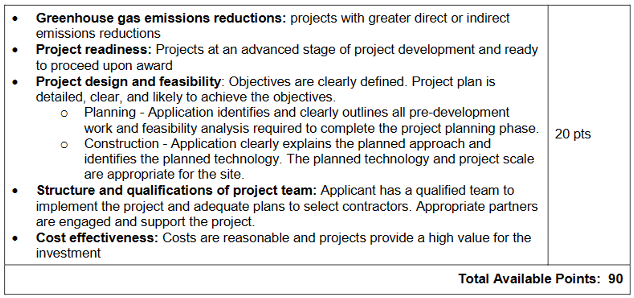What do state agencies say is their priority for taxpayer-funded “decarbonization” projects? According to the Department of Commerce, it isn’t environmental benefit or CO2 reduction, but even more important is what is in “the best interest of Commerce…”
Washington’s CO2 tax, known as the Climate Commitment Act (CCA), has already taken more than $2 billion from taxpayers in the form of higher prices on gasoline, diesel, and other energy. This fall, voters will decide whether to keep that tax in place or repeal it.
To defend the tax, supporters are highlighting how that money will be spent on various government projects. They argue the money is needed to help decarbonize the state and protect the environment, among other things.
But government spending does not equal environmental benefit. At the federal level, the “pathetic” $5 billion federal EV charger project – where only 7 charging stations have been installed since 2021 – shows that simply spending money does not equal results, especially when government bureaucracies are involved.
A look at how the more than $2 billion in CO2 tax revenue is being spent reveals that many of the programs don’t deliver on the promise of environmental benefit.
One of the key claims about government programs funded by the CCA is that it helps reduce the state’s CO2 emissions. Despite that promise, the grants don’t actually prioritize environmental results, instead focusing on political metrics like hiring requirements and community outreach.
For example, one of the CCA-funded grants is supposed to be for “Community decarbonization.” The purported goal of the $67 million in funding is to support projects that “benefit overburdened communities and vulnerable populations by improving environmental health conditions, reducing energy inequities, or strengthening community resiliency.” The actual grant requirements, however, don’t prioritize or require CO2-reduction or environmental benefits.
The grant application offers points in several categories, up to 90 points. Ten points are offered for any group that hasn’t received a previous grant. Those with past experience are already at a greater than 10% disadvantage. Applicants are also offered a five percent bonus if they don’t require employees to “sign an individual arbitration clause.” Projects that have the highest percentage of matching funds are given the tiebreaker in cast of a tie.
None of these have anything to do with environmental benefits.

Despite being called “decarbonization grants,” there are no dedicated points for reducing CO2 emissions. They are simply lumped in with several other considerations including the “structure and qualifications of the project team,” project readiness,” and the project design. “Greenhouse gas emissions reductions” and “Cost effectiveness” are included, but they are grouped with those other topics. All of those considerations combined offer a maximum of only 20 points out of more than 90. It is feasible to offer no reduction in CO2 emissions and still receive most of those points.
In fact, the Department of Commerce says it won’t even compare projects based on CO2 reductions. In the Q&A for the program, staff wrote, “Commerce will not directly compare greenhouse gas emissions between projects, but rather evaluate each project’s effectiveness in reducing greenhouse gas emissions for the type of project.” If one project reduces CO2 significantly more than another, that will not be considered. The type of project – not total emissions reductions – will be the key despite being called “decarbonization grants.”
There are more points offered for the category that includes environmental benefits, but it too is lumped in with economic benefits, community outreach, and other goals. And again, the Department of Commerce is unclear how important delivering tangible environmental benefits are. Commerce staff wrote, “Economic benefits will likely be weighted less than environmental benefits in application scoring.” Likely, but not guaranteed. Again, Commerce doesn’t promise that tangible environmental benefits are a priority.
They even go on to say that “Commerce reserves the right to award contracts to the applicants whose applications are in the best interest of Commerce and the state of Washington.” This is remarkable. First, Commerce staff say they will make a decision based, in part, on what is in the best interest of the Department of Commerce! They aren’t willing to promise to make decarbonization or environmental benefits will be a priority, but they specifically say that grants will be judged based on what is in government’s best interest.
Additionally, Commerce staff remain vague about how they will ultimately prioritize various benefits, allowing them to determine subjectively what is “best” for the state of Washington. At the end of the day, what gets prioritized is up to a small group of government staff.
What happens if they are wrong and the projects they choose fail to deliver environmental benefits? Nothing. They aren’t accountable for those failures, nor are the grant recipients. There are no promises or requirements that the projects yield the promised results.
By way of contrast, privately funded CO2-reduction projects must show they actually deliver on their promises and if they fail, investors on those projects can demand the money be returned. There are no such requirements for government-funded programs like the so-called “decarbonization” grants.
Supporters of the CO2 tax are very vocal about the environmental problems faced by the state and certain communities. But they aren’t so concerned that they demand government programs prove they are making lives better. Instead, they openly say that the priority is what is in the best interest of government agencies.
Simply taxing and spending don’t help the environment. Yet that is the philosophy used here and why Washington has repeatedly failed to meet its environmental goals despite spending huge amounts of money.




